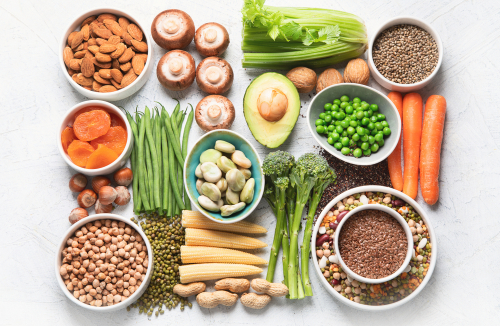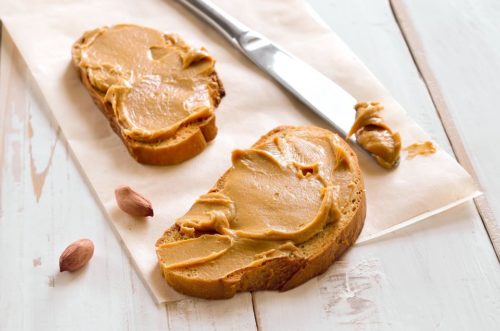
Increase Your Protein Intake With Complementary Proteins
Ever wondered how vegans or vegetarians get their sufficient protein intake? You will most often hear words like Seitan and hemp seeds. While these foods are actually complete proteins (explained soon), you’d probably want more variation in your diet. One way of varying your protein sources is to consume complementary proteins.
What are complementary proteins? All in time, but first, let’s talk about amino acids.
What are amino acids?
Protein – the essential building block of our body. But every good building block is created from excellent materials, and if you’ve read our last article on protein powders you already know that protein is made up of amino acids.
There is a total of 20 different amino acids – essential and non-essential. Given good health, non-essential amino acids are produced by our bodies. Essential amino acids (EAAs) however, are not, and therefore depend on nutrition.
When we eat protein, it breaks down into amino acids. The 9 essential amino acids you must get through your diet are histidine, isoleucine, leucine, lysine, methionine, phenylalanine, threonine, tryptophan and valine. I promise it will take weeks to remember these names so let’s just move on…
These amino acids are most recognized for their role in muscle growth and repair. Our body also depends on them for many other vital processes such as nutrient absorption and immune function.
Complementary Proteins VS Complete Proteins
Whole protein or complete protein is basically a protein that contains all of the 9 essential amino acids. (reminder – the amino acids our body cannot create on its own). Complete protein sources include meat, seafood, poultry, eggs, and dairy products. Some plant-based examples of complete proteins include soy, quinoa, buckwheat and more.
This is great if you love eating these protein sources (like me!).
If, however, you don’t, that’s fine, the way to get all the EAAs you need is by combining two or more incomplete proteins to provide sufficient intake of essential amino acids. These food combinations are called complementary protein. They are mainly grains, legumes, seeds, nuts and leafy greens.
When you incorporate a wide variety of incomplete proteins into your diet, they will combine together to form complementary proteins. They will have the same benefits as complete proteins. For example, grains are low in the amino acid lysine, while beans (legumes) are low in the amino acid methionine. When grains and legumes are eaten together (such as rice and beans or peanut butter on whole-wheat bread), they form a complete protein.

It is generally considered just as good to eat them on the same day as on the same meal. Thus, adding to your daily meal plan complementary proteins is a healthy idea as these foods are high in protein, antioxidants, vitamins and fiber.
What about supplements?
A well-known supplement to increase amino acid intake is BCAA’s. BCAA stands for Branched Chain Amino Acids, for their unique structure. this unique structure allows the amino acids to be broken down directly in the muscle, bypassing the liver. They are basically three out of the 9 essential amino acids: valine, leucine and isoleucine. A lot has been said about BCAA’s benefits to our muscles. BCAA’s are in some of the foods that we eat (like eggs, brown rice and almonds) but when you follow a hard training plan, it can be difficult to get enough BCAA’s regularly. In this case, BCAA’s supplements can help when consumed before, during or after a workout. Just remember what it is, a supplement, not a substitute (to a healthy, balanced diet).
Food Combinations
If you find yourself asking what goes with what, look at the following formulas and make your own combinations. Alternatively, take a look at the chart at the end of the post for some of my recommendations. Just remember your DAILY protein intake is what’s important.
| #1 Formula: Grains (M) + Legumes (T, L) = complementary proteins #2 Formula: Nuts/Seeds (T, M) + Legumes (T, L) = complementary proteins #3 Formula: Grains (M) + Nuts/Seeds (T,M)= missing Lysine amino acid |
Another easy way to remember these formulas is by looking at the history of different cultures. Many of them have plant-based dishes that complement each other to provide all of the essential amino acids. Such meals include the Lebanese pita bread (wheat flour) and hummus (chickpeas). Similarly, Mexican corn tortillas and black beans are a combination of grains and legumes. Followed by the Moroccan couscous with chickpea, the Ethiopian Injera (teff flour) and wat (lentils) or the Indian Khichdi (lentils and rice). In Switzerland Muesli (nuts and grains) and south African Samp (corn) and beans.
Bottom Line
While my recommendation and Fitness meal planner‘s approach is to have a complete high-protein food source in each meal, you can increase your protein intake by choosing a high carb or high fat food source that also has a high protein value when combined with its complementary counterparts. Just make sure that you have them during the same day.


Have comments, corrections or questions (or even just want to say hi!!)?Feel free to send us an email or a message and join our mailing list, we’d love to hear ideas, requests and feedback. For more fitness tips, click here.